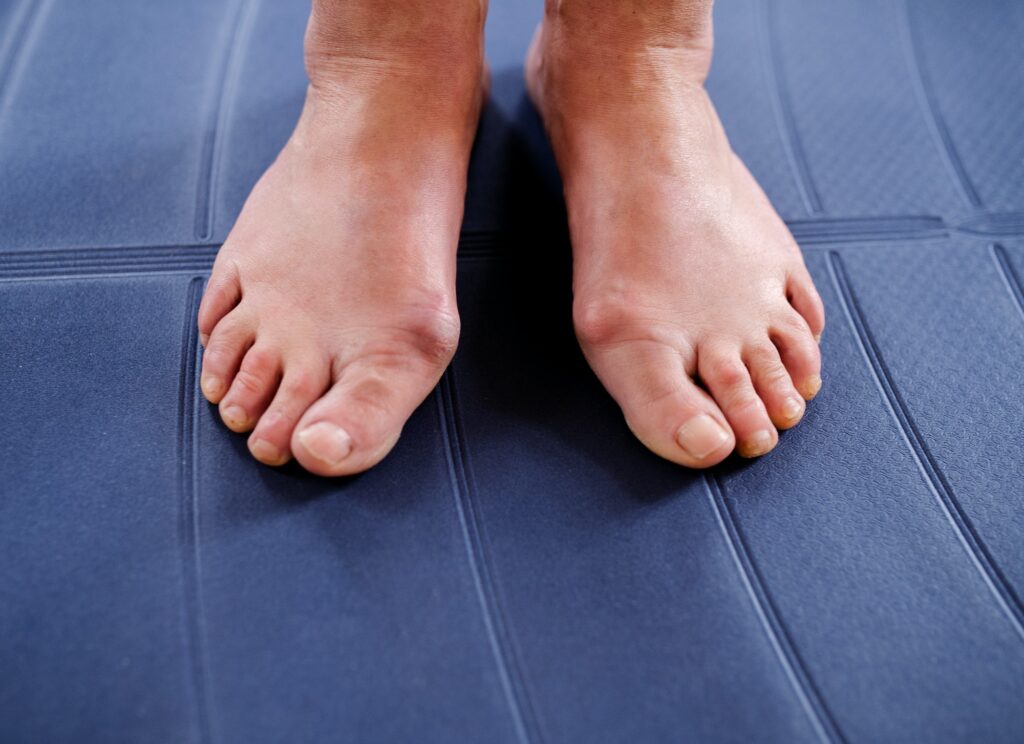What is a bunion?
The common bunion is a localized area of enlargement or prominence of the inner portion of the joint at the base of the big toe. The enlargement actually represents a misalignment of the big toe joint (metatarsal phalangeal joint) and, in some cases, additional bone formation. The misalignment causes the big toe to point outward and rotate (medically termed hallux abducto valgus deformity) toward the smaller toes. This deformity is progressive and will increase with time although the symptoms may or may not. The enlarged joint at the base of the big toe (the first metatarsophalangeal joint, or MTP joint) can become inflamed with redness, tenderness, and pain. A small fluid-filled sac (bursa) adjacent to the joint can also become inflamed (bursitis), leading to additional swelling, redness, and pain. A more deep joint pain may occur as localized arthritis develops in later stages of the deformity.
A less common bunion is located at the joint at the base of the smallest (fifth) toe. This bunion is sometimes referred to as a tailor’s bunion or bunionette.
What causes a bunion?
While the precise cause is not known, there seem to be inherited (genetic) factors that lead to abnormal foot function, such as overpronation that can predispose to the development of bunions. This is especially common when bunions occur in younger individuals. Abnormal biomechanics can lead to instability of the metatarsal phalangeal joint and muscle imbalance resulting in the deformity.
Although shoe gear doesn’t directly cause a bunion, it can certainly make the bunion painful and swollen. Other less common causes of bunion deformities include trauma (sprains, fractures, and nerve injuries), neuromuscular disorders (polio or Charcot-Marie-Tooth disease), and limb-length discrepancies (one leg shorter than the other) where the longer leg develops the bunion. The longer limb will tend to cause the foot to overpronate.


